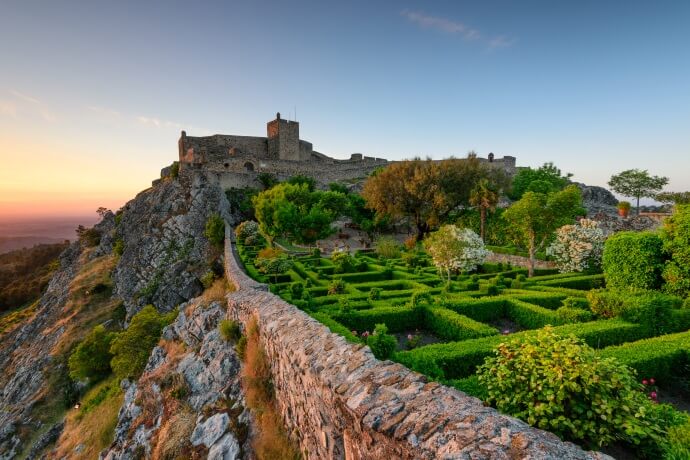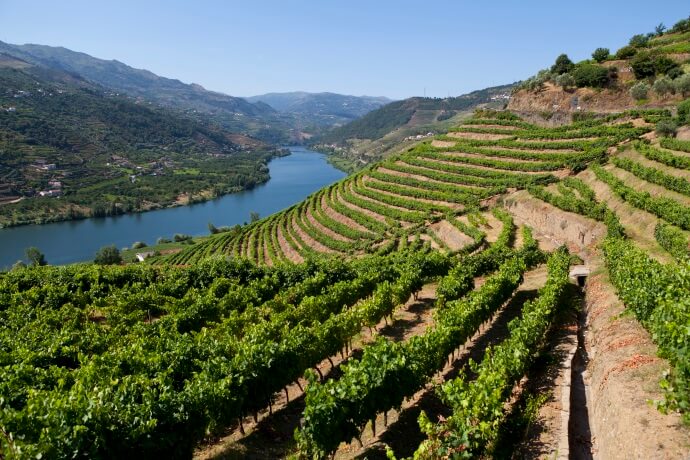In the beginning of a new year, we often dwell onto a certain feeling of nostalgia and of wanting to make brand new resolutions. If you are one of the lucky ones who already had the chance to come to Portugal in 2022, then it is very likely that some of that nostalgia includes memories of the country popping into your mind.
If you haven’t visited yet but you are reading this blog, then the chances are that you are already including a trip to Portugal in your New Year’s resolutions list. Either way, the next few lines are for you, whichever category you fit in - whether you just want to remember the good times you spent basking under the sun on a Portuguese beach or enjoying your first experience of the emotional Fado music in a traditional restaurant; or whether you are still dreaming about images of Portuguese glazed-tile-covered facades or incredibly fresh fish meals for an equally incredible reasonable value, then you might just find that our list of reasons to visit Portugal is just what you needed!
Fado music

Fado is a type of singing, unique to Portugal, that is nowadays considered world music and more recently, in 2011, World’s Intangible Cultural Heritage by UNESCO.
The word fado means “fate” in classic Portuguese, which is a good summary of what this singing style is about. Fado was born with the sailors of Lisbon in the mid 1800’s and it reminisces of the sounds of Africans lamenting their fate while they were taken across the Atlantic in slave ships to work at Brazilian coffee and sugar cane plantations in the centuries before. It is a concept very much linked to the also Portuguese “saudade”: a feeling of longing that, despite implying loss and a sense of “nevermore”, is also a heart-warming feeling of reliving in the present moment, the joys of a past that are impossible to have back. Fado is about that yearning and it is wonderful to listen to the way this is put into words by simple folk, namely the slaves originally, but later, also sailors and prostitutes, both ostracized communities turning their pain into something beautiful.
If originally Fado was informally sung mainly by the poor and the suffering, by their doorsteps or in small gatherings at someone’s house, nowadays the songs are performed by both men and women of all social backgrounds, in small taverns and hole-in-the-wall restaurants throughout the night, especially on weekends. Still, the name for a Fado restaurant remained as Casa de Fado (meaning Fado house), retaining a sense of intimacy.
The Portuguese guitar is a fundamental element of Fado music. This is a plucked string instrument with twelve steel strings, strung in six courses of two strings and played by skillful players with specific training.
Even though Fado has been called many times the “Portuguese Blues”, a Fado show is different from a concert in the sense that you listen to it quietly and respectfully, enjoying a wholeheartedly performance by the singer and the players, and wait for their cues to clap, sing or dance along to the music. Fado music has different variations in Lisbon, Coimbra and Porto, so it would be absolutely great if, while on your trip to Portugal, you could venture into one of those “Fado houses” and see and listen for yourself what the Portuguese soul music is about.
Pastel de Belém

This is a really special reason to come to Portugal: food! We chose to mention here the Pastel de Belém as it is an iconic sweet of the city of Lisbon, with many copies being made across the country and even worldwide - but you will only be able to find the original in the historic neighborhood of Belém.
The filo dough pastry, with a soft, egg-and-vanilla-custard is a secret monk’s recipe from 1837, and is still prepared in the same way today. The site was a former sugar refinery turned into a store, where the monks of one of the monasteries in Belém started selling these pastries to the general public, following the general shut down of convents in 1834 by the monrch at the time, King Pedro. This was a bold movement who left him with many enemies. A lot of monks and friars were facing the prospect of unemployment, so they had to get creative. Many opened their own businesses, as it was the case with the Pastéis de Belém place. Since then, these pastries have been a success and a real brand image of the region’s cuisine.
Belém is a neighborhood of great historical interest and a visit to Lisbon needs to include at least a quick detour by tram or train to see the grand Mosteiro dos Jerónimos (Hieronymites Monastery), the much ornate Torre de Belém (Belém’s Watchtower), the very educational Padrão dos Descobrimentos (Monument to the Discoverers) and undoubtedly, the creamy and warm Pastéis de Belém! We swear to you that they are totally worth some waiting in line at the store - this flavor is something that your taste buds will surely remember for years to come.
Walled towns to go back in time

Our walled towns in Portugal are real national treasures and it is hard to choose just one favorite among so many. Usually medieval, these small towns were cleverly adapted throughout the centuries to keep their original charm at the same time that they would accommodate the comforts of the modern age. Some of the best examples of picturesque walled towns in Portugal can be found in Lindoso, in Gerês, in the North West; Sortelha and Linhares da Beira, in the Center East, near the Serra da Estrela mountain range; Óbidos, in the Center West; and Monsaraz and Marvão, in the Alentejo region, on the way to the South East.
The walls usually date back to the period of the creation of Portugal as a country, by the Crusader Knights around the 12th century. Most of them still preserve their Middle Ages characteristics, like the square turrets, the watchtowers and their rectangular shape and it is usually possible to walk the ramparts, although we do recommend you hold on to the railings and follow the predefined itineraries, because stairs and steps, as well as the ramparts, can still be very much medieval and therefore dangerous if you fail to mind your step. However, if you do it, the views are usually an incredible reward to the effort of going up.
Make sure to plan in advance so that you know what to expect, where to park, what restaurant to book for lunch, among other details equally important when you are visiting an ancient site, popular with tourists and with roads dating back to centuries ago. But our advice is: go, go, go! Visit as many as you can as side trips or try to book a hotel within the city walls and enjoy some days of traveling in time!
Vineyards that test limits

When millennia ago, the Roman people from the Douro Valley looked at their hilly, fertile land overlooking the river, they had an idea on how to make them more accessible, preserving the land from erosion and allowing the cultivation of vines. They built slopes that, just like a staircase, descend down to the River Douro waters - and on them they had their vines planted and grown. The vineyards on the slopes are still used today and they provide some of the best wine in Portugal and amazing views. The uniqueness of these slopes and the people living and farming the vineyards of the Alto Douro Vinhateiro trademark have been recognized as World Heritage by UNESCO in 2001.
Driving here can be a bit of a challenge given the narrowness of some of the roads, namely the famous N222, but if you do drive with care, you will be rewarded by what the New York Times once called “the most scenic route in the world”. Whether you are standing on a viewpoint in the Douro Valley overlooking the landscape around you, or whether taking the Douro train while enjoying the perfectly manicured views through the windows, you will probably feel very much like being in a grand theater or opera house, as it is the perfect setting for your perfect adventure.
Take time to explore the region and visit quaint little towns like Folgosa or Pinhão, or larger ones like Régua or Lamego. Anywhere you go, you will be spoilt for choice as far as hotels with views and excellent restaurants serving the best wine, are concerned.
Walk a levada

A levada is an ingenious creation by the people of the Madeira Island, off the coast of Portugal, and consists of an irrigation canal or aqueduct flanked by a footpath. Levadas are also called channels, usually of smaller dimensions, which carry water to the water mills.
The channels have an extension of more than 3000 km and can be walked or hiked depending on the level of difficulty. They are an excellent way to visit the most remote places, with the most dramatic landscapes of the island. The levadas are also a must cherished botanical relic, since most of the paths are within the limits of the Nature Park of Madeira.
There are several types of levadas with different levels of difficulty, and most of the routes are marked, but we do recommend planning in advance. Before setting off in search of adventure, you must remember that the levadas are almost always in a mountain environment and in some cases in high mountain, which carries high risks due to their remoteness, specific weather conditions and altitude. However, many are easily accessible and perfect for simple walks in the middle of nature and in the Laurissilva (or Laurel) forest. This is a type of rain forest, composed mainly of trees of the laurel family and endemic to Macaronesia, a region formed by the archipelagos of Madeira, the Azores, the Canary Islands, and Cape Verde, considered since 1999 World Heritage by UNESCO.
To walk the levadas of the Madeira Island and the beautiful trails is a perfect way to get to know the cultural, scenic and impressive sides of the island, and feeling as one with nature. A paradise waiting for you!
How many reasons do you need?
Of course, there could be so many more reasons to want to come to Portugal, but these five are definitely on the top because they represent the very soul of the Portuguese and of the different regions. A soul that is as honest and authentic as it is welcoming and willing. A soul of explorers, non-conformists and of the ones who take the time to enjoy the simple things, like a pastry or a wonderful view. The essence of this soul of Portugal is about taking the opportunities lying ahead, and never failing to keep our most genuine side above anything else.
If five was the magical number of reasons you needed to book your trip of Portugal, here they are! However, this is a list with an open end, and once you are here, you are more than welcome to add your own special reasons to it. We look forward to hearing from you!



